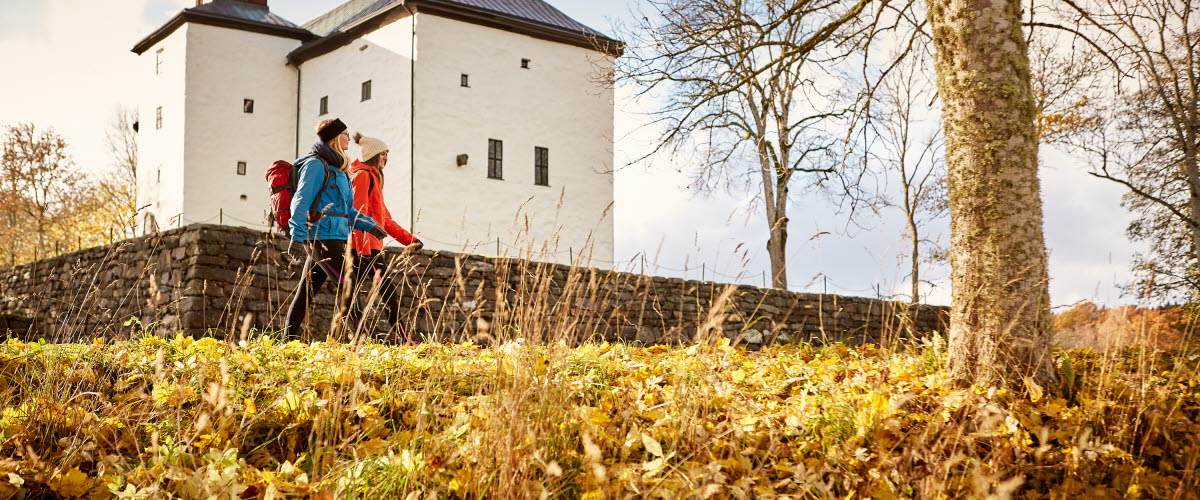Hiking tips and useful Information in Sjuhärad
Here you find some useful information about the classification of trail degree of difficulty, the right of public access and about where you eat and sleep well along the hiking trails.
Classification of trail degree of difficulty
We have chosen to classify our walking trails according to degree of difficulty. There’s a short description below of what that degree of difficulty entails.
- Easy access: The walk should be easy access as per existing guidelines and be listed in the Accessibility Database. You can make your way in a wheelchair, with a walking frame or pushchair.
- Easy: These walks should be possible to do on wheels, i.e. with pushchairs, wheelchairs and walking frames. This also applies to bridges and boardwalks, if any.Thesurfaces are gravel or asphalt.
- Moderate: Accessibility should be good. The walk is partly or wholly on nature trails. Altitude rises shouldn’t be a problem for a person with a normal level of fitness.
- Difficult: Accessibility is limited, with stretches containing altitude rises or steep sections that require users to be in good shape. You will need to wear walking boots or sturdy footwear.
The right of public access
The right of public access is a unique opportunity to move freely out in nature. The right also includes the obligation to take care and show consideration – both to the nature and flora and fauna, to the landowners and to other people out in the country.
In other words, do not disturb – do not damage
You can go anywhere on foot, on your bike, skates or skis – as long as there is no risk of harming crops, forestry plantations or other sensitive ground. You must respect people’s private life and you must not cross or stop on private ground.
When you cross grazing land, you must be careful to close any gates behind you. Respect the animal and bird life. And take your rubbish home with you! Remember that the right to public access is limited in national parks and nature reserves. As a visitor in nature, it is your responsibility to know what applies in the area you are visiting.
Sleep and eat well
Are you looking for accommodation, or a nice restaurant with great food to stop at while you’re on your cycle- or walking tour? In the sites about the trails you find maps with details of the restaurants, cafes and places to stay that you’ll find along the way. For the hiking trails see this site.
Don’t forget to check opening times at the attractions and other destinations you want to visit. It’s also a good idea to book accommodation in advance.
Hiking tips
Take your time - Relax when you're outdoors and take the opportunity to enjoy nature. Don't worry about how fast others are walking or your kilometer times; instead, stop when you want and take plenty of breaks and pauses.
Good shoes - The most important thing is that your shoes are comfortable and suitable for walking. Often, a pair of sneakers or similar shoes will take you far if you're mainly going on day trips. If you're planning longer hikes, it can be nice to have more sturdy hiking shoes or boots. Consider taping your feet at home to avoid blisters, for example, with Leukoplast or other sports tape. If you have brand new shoes, try breaking them in a bit before embarking on longer hikes.
Packing and equipment - Have a backpack that can hold what you want to bring and is comfortable to wear. It's a good idea to bring extra clothes to change into during breaks and in case the weather changes, but try to choose lightweight clothing so that the backpack doesn't become too heavy. Most importantly, bring a substantial meal with plenty of goodies and ample water! Don't forget to bring a seat pad to sit on during breaks.




